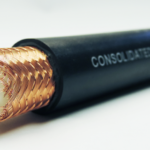By Shawn Prestridge KI5PXG

I know that many people think about doing a DXpedition but are intimidated by the idea, assuming that the amount of work needed to prepare for such a trip won’t offset the fun you can have with your favorite hobby. To encourage more people to try their hand at a DXpedition, I put together a short summary of my experience with my first DXpedition (which happened to be at The Turks & Caicos Islands – TCI).

The most difficult part of the whole experience was figuring out how to get a license from the TCI Telecommunications Commission. I found an online form on their website that I filled out, but there was nothing to indicate to whom I should send the form, nor how much it would cost to get the license. I ended up sending it to their catch-all information email address. After a few days with no reply, I decided to spend a few bucks and just call TCI Telecom’s main number. I spoke to a really nice person who guided me to a webpage that had the email addresses of the Commission’s director and chief engineer and suggested that I email them both. The 6-minute phone call cost me $12 from Verizon, but allowed me to go straight to the top of the hierarchy. Within a few hours of emailing the director and chief engineer, I had a response that directed me to their new online request system named Spectrum. Once I requested access by putting in my email address, I received an email about 15 minutes later granting access and allowing me to input a new application. The application process had me upload a picture of my passport and an official copy of my US radio license as well as the make/model/serial number of my 991A. Once this was complete, I received an invoice the next day asking me to pay US$30 and with instructions on account numbers to do a wire transfer. Since a wire transfer would cost me $95, I emailed the folks at the Telecom commission to ask if I could just stop by and pay cash when I arrived at the island (the Telecom commission is halfway between the airport and my hotel). They agreed and released my license where I could download it from the Spectrum portal.

The next thing I stressed about was getting my radio through customs. I decided to take KG5WRY’s vertical antenna (https://www.k5rwk.org/2023/02/27/a-low-cost-quick-deploy-portable-antenna/) with 4 radials of 28’ each. I packed everything except the vertical and its spike in a single carry-on, putting those two exceptions in one of my checked bags. I placed my VP5/KI5PXG and KI5PXG licenses on top of the items in the carry-on so that if security opened my case, they would instantly know what was in the case and that I am carrying radio equipment for a legitimate purpose. However, my carry-on sailed through the TSA screening at DFW like it was a suitcase full of clothes: no fuss, no muss. When I arrived in TCI, I breezed through the “nothing to declare” line and I was off to do my first activation!

The POTA park Princess Alexandra National Park VP5-0001 had never been activated and fortunately the park also included Grace Bay Beach where my hotel is located. Therefore, all I had to do to be POTA-compliant is simply drag my equipment down to the beach. I setup the antenna in the sand (surprisingly, the 12” spike was sufficient to hold up the 18’ antenna (fully extended) in a 20mph gusty wind), spiked down the radials (which had ring terminals on each end), and strung coax to a beach chair under an umbrella where my 991A, 6Ah battery, and computer were located. The setup took 5-10 minutes and the tear-down 5 minutes each day.
Why only a 6Ah battery? The TSA only allows up to a 100Wh battery (~8Ah) with an option for your airline to permit up to 150Wh (~12Ah). However, I didn’t want to get stuck in a foreign country with a different set of rules pushing the 12Ah setup, plus I bartered with the XYL to have no more than 2 hours of operating time per day so I would spend the rest of the time with our twin harmonics. The following shows my experience with the 6Ah battery and how long it would power the radio under various operating conditions: 100W SSB – 1.5 hours, 40W FT-8 – 1.25 hours, 25W FT-8 – 2.25 hours.

During the first day, I made 44 SSB QSOs but was slightly annoyed with the massive pileup I was working. Some folks listening in estimated that I had 100-200 people in the pileup; while I will never know exact numbers, I can tell you that it was so bad that I couldn’t make out a single letter or number from the cacophony and resorted to tactics such as “0-district callsigns only, QRZ?” Unfortunately, a few bad apples insisted on throwing out their non-0 callsigns and waiting 5-10 seconds before putting out their callsign. The bad DX behavior was very off-putting, and I told the pileup that they were making this stressful for me and therefore not fun anymore…and if they persisted, I would just QRT and go enjoy being with my family. After a few minutes of this badinage, the battery made the decision for me when it died. I did a few SSB skeds with RWK members, but mostly stuck to FT8 after this as it made working a pileup very easy. In the end, I had 192 QSOs.
On my return trip, the security folks at Providenciales airport in TCI did search my carry-on with the radio equipment, but as soon as they opened up the case and saw my printed licenses, they asked what was in the bag and I gave them a short run-down. They pulled a few items out to take a deeper look inside the suitcase, but quickly lost interest and asked me to repack the items and have a nice flight. Upon entering the US, I simply waltzed through the “nothing to declare” line at DFW and therefore all my equipment made it back safely.
While planning took a bit of time (and I stressed about the unknown of getting my radio equipment into and out of a foreign country), the transit side of the equation was almost a non-event. Finding out how to get the license was definitely the most difficult part of the whole process, but you can always ask other hams if they know anyone that has done a DXpedition to the country you plan on visiting. Those folks can give you great tips and tricks to make getting your local callsign easier.
In all, it was a fun and rewarding experience that I’m eager to replicate – I’m already negotiating with my sideband about the next DXpedition and I’m looking forward to repeating the process!







